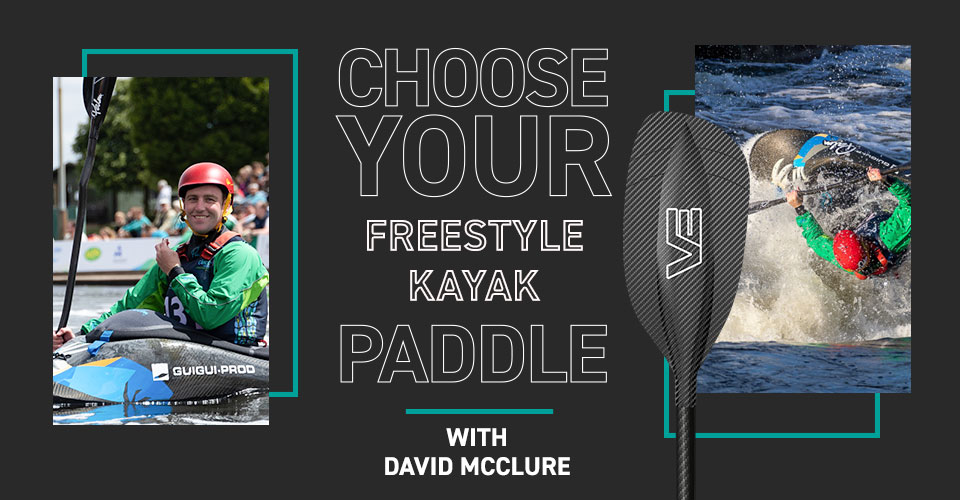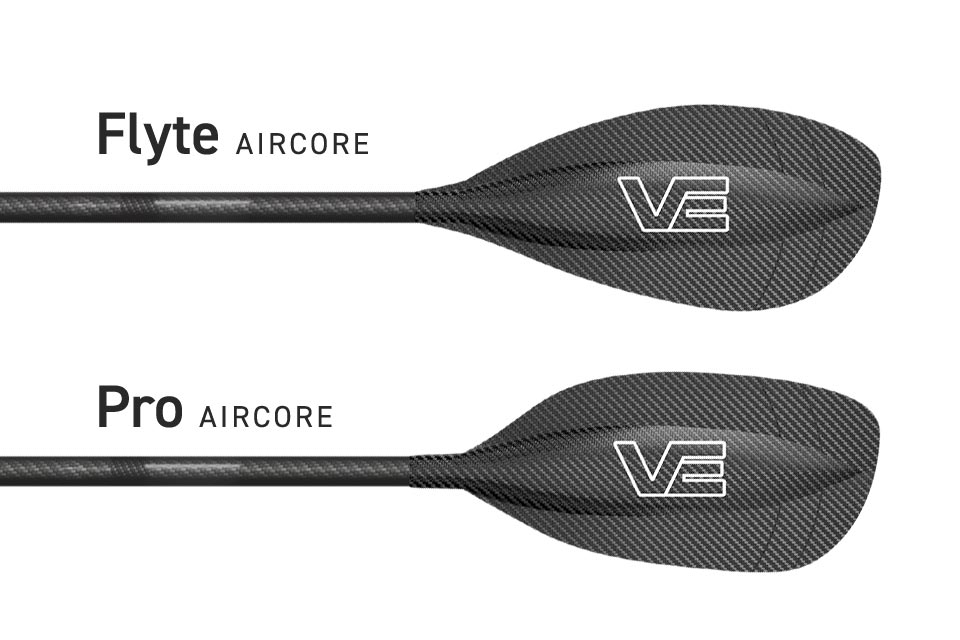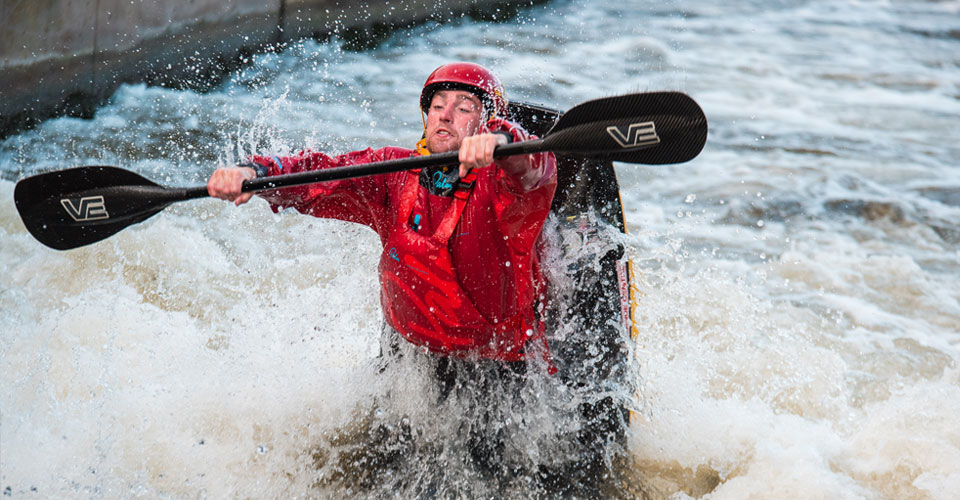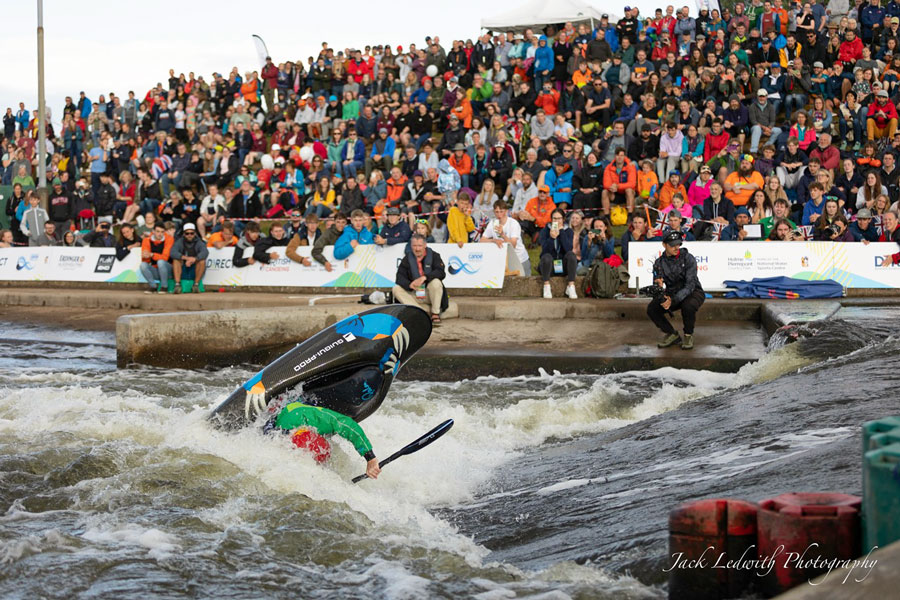Choosing a freestyle paddle – with David McClure
Posted on Friday 3rd February, 2023

David McClure – is an incredibly talented freestyle kayaker and coach from Ireland. He’s a European freestyle champion and a finalist at multiple freestyle world championships. When he’s not training or competing, he’s coaching young up-and-comers through European Whitewater School. We asked David about his choice of paddles:
My choice of paddle for freestyle kayaking
I’m 175 cm tall and weigh 80 kg. I use the Aircore Pros with carbon straight shaft for freestyle and the Aircore Flytes with carbon straight shaft for river running and coaching.

Why VE Paddles?
I’ve gone through a few through the years from Rough Stuff and Selects to G’powers and Werners. Eventually I settled on VE Paddles from back when Stu was still making them from his home. They were the lightest I’d found and the most powerful, they‘re lovely to hold and I found that despite how good the rest were, the VEs felt closest to my style. I feel connected to them and forget I’m even holding them at times. I really clicked with my VE paddles at the 2017 freestyle world championships in Argentina. I went with my dad and he was stealing them every chance he got to sneak off for a paddle.

What paddle length do you usually go for?
I started off using pretty short paddles, around 189 cm, because fellow VE freestyle paddler Gav Barker used that length. In my eyes, it gave me more manoeuvrability, with less chance of the blade trailing behind me on looping moves. Over time, I realised that the longer paddle made moves like tricky whus and lunar orbits a little easier. The extra length gave a bit more leverage and could catch the water better when I was upside down rotating. My body movements can be a little less while the paddle reaches further.
At the European championships in Paris where the feature was really compact and movements had to be pretty tight and fast, the shorter length was a great advantage. Since then, I’ve moved to between 191 and 194 cm for freestyle – allowing me to play with movements using the blade a little differently.
Regardless of length, the key for me has been how light the paddles are while maintaining their strength and power. I paddle a lot and I break blades a lot but I’m yet to break my VEs and my old blades are still in use. I think that speaks volumes for the blades. They fly in competition and they hold up for long term use.
Talking about feather
There’s always talk about the angle in our community. I lean towards fifteen degrees. Zero feather is great for flatwater loops and forty-five is great for forward paddling. Most paddlers I know go somewhere in between, either fifteen or thirty degrees.
At zero feather I find that once both blades are in the water, water will catch both blades evenly and make it harder to get them to the surface. Fifteen degrees may be only a small difference but to my mind it makes a world of difference.

Bigger or smaller blades?
Blade size isn’t discussed too often but custom VEs give you the option of smaller or larger blades. I tend to go with the largest available blade area to get more face of the blade in the water but it’s important to cover your own size and weight. If you’re young or smaller, the large blade may be unnecessary. A lot of this depends on your style of paddling.
It’s not always easy to imagine yourself in the third person and appreciate how your style differs from the people you paddle with. If you don’t know much about how you paddle, a good step is to ask your paddling friends to describe how you paddle, film your own rides, and you can always chat to your VE retailer or local coaches to get some expert advice on what paddle will suit you.
– photos Jack Ledwith and Tom Clare
Recent Posts
- The new Skera touring paddle - November 2025
- SUPBoarder’s first look at the VE Riva SUP paddle - May 2025
- Avoid the walkout – why everyone should carry a breakdown paddle - March 2024
- The Fara and Vanda – new lightweight touring blades - December 2023
- Fara paddle review by Dimitri Vandepoele - November 2023
News Archive
- November 2025
- May 2025
- March 2024
- December 2023
- November 2023
- September 2023
- June 2023
- May 2023
- March 2023
- February 2023
- November 2022
- August 2022
- May 2022
- March 2022
- November 2021
- June 2021
- February 2021
- December 2020
- July 2020
- April 2020
- December 2017
- July 2017
- June 2017
- May 2017
- April 2017
- February 2017
- December 2016
- November 2016
- October 2016
- September 2016
- July 2016
- June 2016
- May 2016
- April 2016
- March 2016
- February 2016
- January 2016
- December 2015
- October 2015
- September 2015
- August 2015
- July 2015
- June 2015
- February 2015
- December 2014
- November 2014
- October 2014
- September 2014
- June 2014
- May 2014
- April 2014
- January 2014
- November 2013
- September 2013
- May 2013
- April 2013
- March 2013
- February 2013
- January 2013
- December 2012
- November 2012
- October 2012


